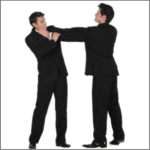You Quick Guide to Workplace Bullying
Training on preventing bullying in the workplace is crucial in creating a workplace that is inclusive and safe for all. Your company has a responsibility to prevent bullying and its impact. But what is bullying in the workplace and its different types? Why do people bully in the workplace? And what do you do […]
You Quick Guide to Workplace Bullying Read More »






